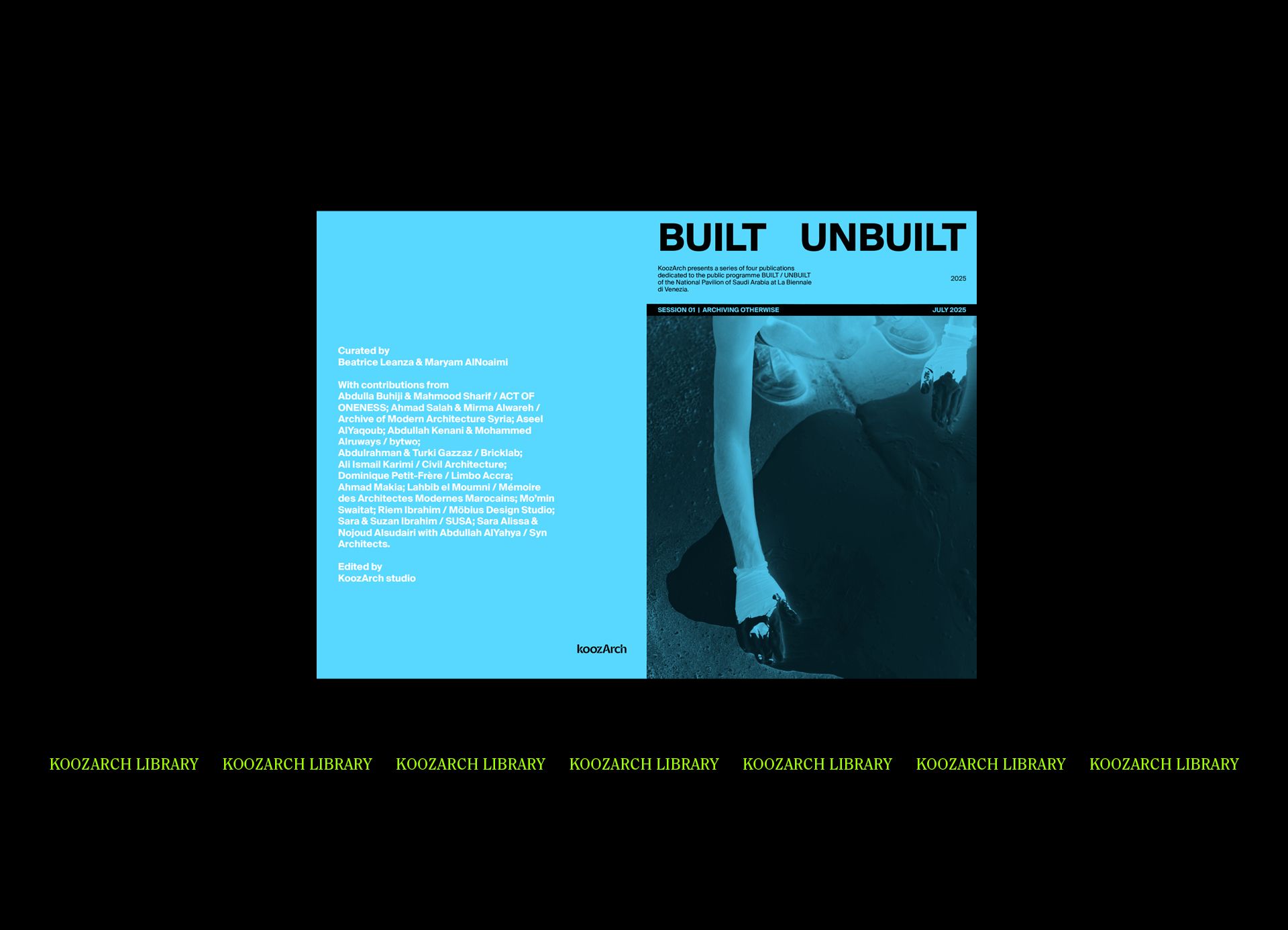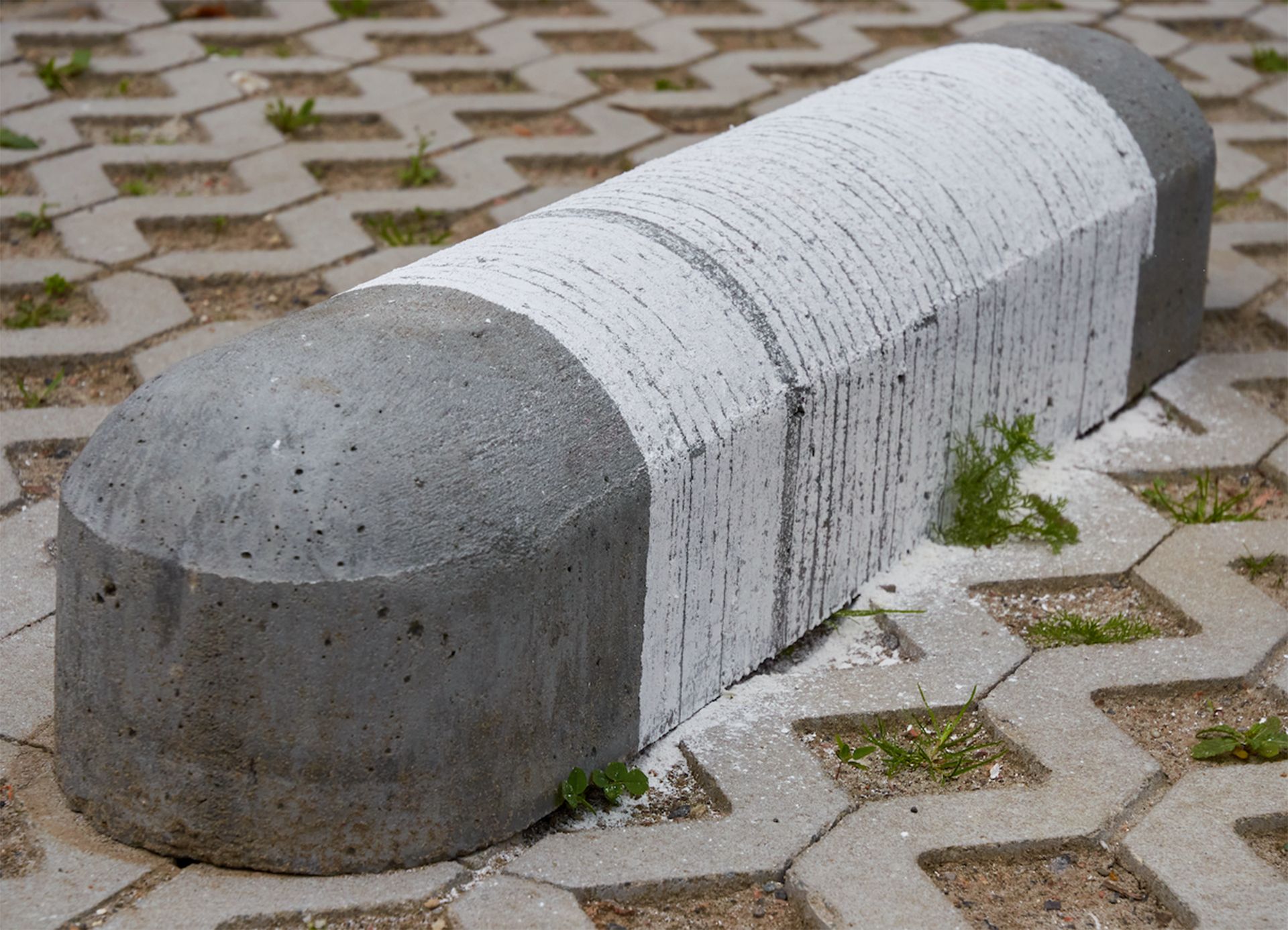“The spaces we design are intuitively connected with stories. Stories we have lived, have heard from others, and have imagined ourselves.” In this conversation with architect and writer Chiara Dorbolò we explore her recent publication “Liminal Places: Seven Spatial Stories to Return Home” (Onomatopee, 2022) and her investigation into the “state of transition of liminal places as a universal metaphor for personal life, making explicit the different roles physical space plays in the human experience of the world.” Rather than silent and as still backgrounds against which events unfold, the architect and writer sees spaces as active forces deeply intertwined with a character’s life, in fiction as much as in real life.
KOOZ What prompted you to embark on the writing of the book “Liminal Places: Seven Spatial Stories to Return Home”?
CD The book is the result of my work during the year of the Talent Development Grant, a grant awarded by the Creative Industries Fund in the Netherlands. When I wrote the proposal for the grant I was leading a double life: working as an architect in a commercial firm during the day and volunteering as a writer and editor for a platform criticising the same kind of firms in the evenings and in weekends. The work that I found interesting, rewarding and ethically uncompromising was not paying my bills, while what was actually supporting me made me part of a system I wanted to distance myself from. So writing this proposal was an attempt to develop a project where I could find my own voice within the discipline, acting as a designer as well as a writer, and where I could create space and think critically about it at the same time.
The work that I found interesting, rewarding and ethically uncompromising was not paying my bills, while what was actually supporting me made me part of a system I wanted to distance myself from.
KOOZ As narratives which bring together personal tales with social issues, spatial criticism and creative practice, how does narrative explore and challenge the notion of Home, located in between the physical and the immaterial?
CD The notion of home is a very complex one. While it is subject to very drastic changes over time, there is a tendency to make assumptions about the universality of its meaning. The stories in the book try to challenge these assumptions in different ways: a house becomes a narrator/character with her own emotions and insight; the soft, domestic spaces of the stories are sublimed into uninhabitable hard sculptures; liminal spaces of transition, such as trains and airports, become more powerful anchors for home memories than proper domestic spaces.
Writing these stories made me realise how intertwined are a character’s life and the space where it happens. We usually think of space as a still background, but very often it is a very active force in shaping the events.
KOOZ What were your most significant discoveries when writing the individual stories?
CD In general, I was amazed at how good spaces are at telling stories. I probably had known this for quite some time, as a reader and as designer. Yet, writing these stories made me realise how intertwined are a character’s life and the space where it happens, in fiction as much as in real life. We usually think of space as a silent, still background against which the events unfold, but very often it is a very active force in shaping the events. Writing these stories, in particular Unhinged Symmetry, that was inspired by my grandmother’s house, and The Airshaft, which is set in an apartment where I spent some months at the end of 2020, I started thinking of space as a very decisive factor in the development of a narrative.
KOOZ Within the book you talk about how “designing a space is always connected to the development of a story.” Could you expand on this assumption further?
CD I guess that is a symmetrical point to the one I just made about the role of spaces in stories: when we design a space to a certain extent we always design it for specific activities, for a specific life to take place there. In a sense we draft a story for the future occupants of the space - in the example of a residential space we ask ourselves what kind of life will the inhabitants do: will they spend their day inside? Will they work at home? Will they have children? Will they look outside while drinking their coffee in the morning? On a larger scale, our cities are designed assuming certain aspects of societal life that we do not even question but that definitely shape the way we relate to each other and to the space around us. To get back to the example of housing, looking at traditional domestic spaces in different parts of the world can shed some light on how religion, culture, social values translate directly into distributions, architecture types and even urban design.
Traditional domestic spaces in different parts of the world can shed some light on how religion, culture, social values translate directly into distributions, architecture types and even urban design.
KOOZ Each story is coupled with a physical spatial materialisation of the narratives. What informed this choice of representation? How do these material artefacts expand and/or synthesise the story?
CD When I was writing the stories I realised that in many cases I was using space as an organisational device, in the way we normally use time. For example, I was thinking of the apartment where the story Liminal Places is set and imagining the plan of the building block and of the housing unit I was setting the events in, circumstances that took place in each corner of these spaces. So instead of using a timeline I started sketching plans and axonometric diagrams. Spontaneously, I started to go back and forth between the space and the story, defining relationships of priority, proximity, containment and so on between events and between spaces. Finding this process very exciting, I wanted to represent it by giving each story its spatial translation. Sometimes the result is very literal, and could be easily recognised by the reader, and sometimes the association is more metaphorical, and readers seem to come up with their own interpretation of the space. The choice of scale (all sculptures could fit in a 7x7 cm box) and material (each sculpture is made of only one material) had the aim of distancing the object from realistic representation, highlighting the compositional role of space in the stories.
KOOZ The book was written during the pandemic. To what extent did this period re-shaped and redefined your relationship to the interior? How is this manifested in your spatial stories?
CD Living in a geographical area where square meters of interior spaces are valued and priced beyond affordability, I was used to live my life almost entirely outside my domestic space: offices, working places, cafes, bars, restaurants, parks, terraces and public transport were the places where my day to day happened. That changed overnight when the pandemic hit, and suddenly I was confined in a 37sqm studio with my partner. For the first time in my adult life my own domestic space became not only the place where I spend the night, but also the place where I worked, where I talked to my friends (on zoom), where I celebrated holidays and birthdays and so forth. That added new layers of meaning and value to each one of those 37 square meters and stimulated the emerging of memories associated with specific interior spaces of my past, as well as reflections on the value of domestic spaces at large. I think this almost obsessive attention for the significance of domestic space in my own experience crept into the spatial stories almost unnoticed, and I became aware of this only months later.
Can we start thinking again of domestic space as the space where we socialise, where we make memories, where we blow off steam, where we dream of the future?
KOOZ In what ways has the pandemic redefined the way we perceive and design our homes on the long term?
CD As a designer who was recently involved in a large housing project, I have discussed at length new programmatic requirements for apartments, and the most important change has to do with the fact that the pandemic legitimised working from home in a wide variety of contexts, and that created the need for a space designed specifically for this function even in the smallest studio apartments. But switching to an online working environment had also the shattering power of turning public what had always been the private space of our homes. Think, for example, of schools that started to have classes on zoom: suddenly, the space of the classroom was invaded by cooking grandmas, purring cats and screaming children, while social class and economic status were often declared by the ownership (or lack thereof) of an individual room, a personal computer, or an outdoor space for sunny days. But I think that there is much more to be learnt in a society where we rely so much on paid services for our own happiness. Can we start thinking again of domestic space as the space where we socialise, where we make memories, where we blow off steam, where we dream of the future?
Find the book "Liminal Places. Seven Spatial Stories to Return Home" (Onomatopee, 2022) and visit the website at liminalplaces.nl.
Bio
Chiara Dorbolò is an architect and researcher working at the intersection between storytelling, criticism, and design. She studied at La Sapienza University in Rome, Italy, and at the Amsterdam Academy of Architecture. Currently based in Madrid, she works as a writer, curator, designer, and educator. Since 2017, she is a contributing editor at Failed Architecture, for which she curated the special series A City of Our Own: Urban Feminism for the 99%, and, together with Daphne Bakker, the project Stories on Earth, presented at the Venice Architecture Biennale in 2021. In collaboration with Future Architecture Platform and DPR Barcelona, she recently curated the Architecture Bookfair 2021. She was among the recipients of the Talent Development Grant from the Creative Industries Fund NL in 2019.
Federica Zambeletti is the founder and managing director of KoozArch. She is an architect, researcher and digital curator whose interests lie at the intersection between art, architecture and regenerative practices. In 2015 Federica founded KoozArch with the ambition of creating a space where to research, explore and discuss architecture beyond the limits of its built form. Parallel to her work at KoozArch, Federica is Architect at the architecture studio UNA and researcher at the non-profit agency for change UNLESS where she is project manager of the research "Antarctic Resolution". Federica is an Architectural Association School of Architecture in London alumni.





